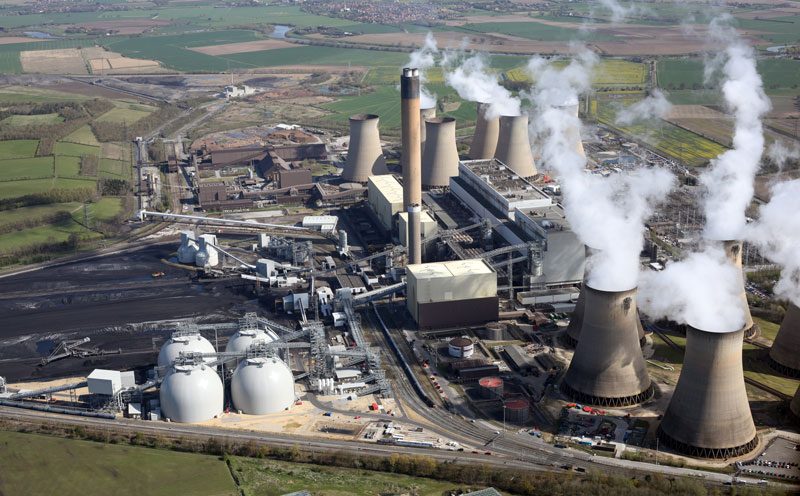Drax Owners Plan to Become Carbon-Negative Within 10 Years

Once branded as ‘Europe’s biggest polluter’, the owners of the Drax power plant are planning on becoming the world’s first carbon-negative business by absorbing more emissions than they create by 2030.
Drax Power Group aims to build on existing plans aimed at transforming the North Yorkshire plant into a renewable energy giant, pioneering ‘carbon capture’.
As a coal-burning station, the UK’s largest single power plant released millions of tonnes of carbon dioxide into the atmosphere for several decades. However, over the last few years, the coal generation units at Drax have been converted to run on renewable biomass.
Subsidies of around £2m a day were required in order to make the change. The next step in their plan to battle the climate crisis will require more support from the taxpayer. The funds are needed to develop the technology that will allow millions of tonnes of carbon emissions from the plant to be captured and stored underground.
Chief executive of Drax, Will Gardiner, said that bioenergy with carbon capture (BECCs) was crucial if we want to build a sustainable economy whilst combating climate change, saying:
“Drax’s ambition is to be carbon negative by 2030. Having pioneered the use of sustainable biomass, Drax now produces 12% of the UK’s renewable electricity. With the right negative emissions policy we can do much more, removing millions of tonnes of emissions from the atmosphere each year.
“The UK government is working on a policy and investment framework to encourage negative emissions technologies, which will enable the UK to be home to the world’s first carbon negative company”.
Emission-saving calculations at the start and finish of a BECCs process are used to account for the carbon-emissions of the project. It is claimed that the lifecycle of the entire project would remove more carbon emissions from the atmosphere than it would produce. Thus, it is being touted as ‘carbon-negative’ source of energy.
The first saving would be recorded when the trees used to make biomass absorb carbon from the air as they grow. The second is recorded when the carbon-capture technology at the power plant traps the carbon emissions produced when the wood is burnt.
The Committee on Climate Change, the official climate adviser to the government, said that carbon capture is vital if the 2050 climate targets are to be met.
There are a group of companies hoping to make the Humber region carbon neutral. It is currently one of the UK’s most polluting industrial zones, and if the plan succeeds, thousands of jobs in manufacturing would be safeguarded.
It is believed that the UK could successfully move away from high-carbon gas by trapping carbon produced at the factories and producing hydrogen.
However, not everyone agrees with the use of BECCs. Academics and environmentalists are sceptical about the certainties of the carbon accounting within BECCs projects, whilst others argue that progress in the sector is too slow for the full benefits of bioenergy to be reaped.
Read on our blog

With the government poised to implement tough new measures to...

Budget broadband provider TalkTalk has been notifying customers via email...

A year-long investigation by charity Citizens Advice has revealed a...

Education Secretary Nadhim Zahawi has announced a new commitment to...
